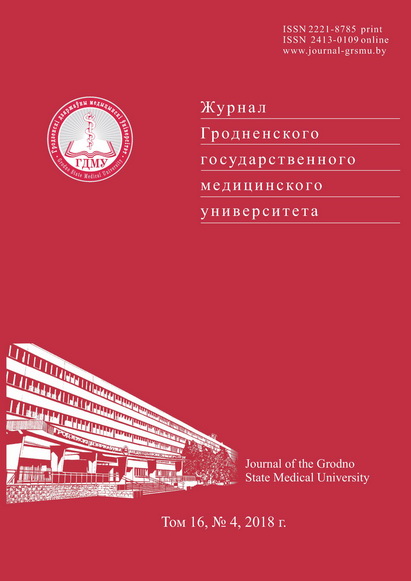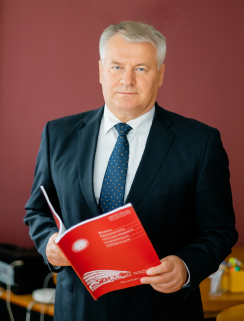СИНДРОМ УДЛИНЕННОГО ИНТЕРВАЛА QT. ЧАСТЬ 1
Аннотация
Синдром удлиненного интервала QT (LQTS) – это потенциально жизнеугрожающая каналопатия, сопровождающаяся удлинением интервала QT на 12-канальной ЭКГ, синкопальными состояниями и высоким риском внезапной сердечной смерти вследствие развития полиморфной желудочковой тахикардии типа torsade de pointes. Первоочередная цель в ведении пациентов с LQTS на современном этапе состоит в недопущении недиагностированных его форм, адекватном лечении и профилактике, чему способствует быстрое развитие молекулярной биологии и генетики. В первой части настоящего обзора отражена история изучения, этиология, эпидемиология, патогенез и клиническая картина синдрома удлиненного интервала QT.
Литература
Bokerija OL, Sanakoev MK. Sindrom udlinennogo Q-T intervala [Long QT syndrome]. Annaly aritmologii [Annals of Arrhythmology]. 2015;12(2):114-127.doi: 10.15275/annaritmol.2015.2.7.
Tester DJ, Ackerman MJ. Genetics of LONG QT syndrome. Methodist Debakey Cardiovasc. J. 2014;10(1):29-33.
Hinterseer M, Beckmann BM, Thomsen MB, Pfeufer A, Dalla Pozza R, Loeff M, Netz H, Steinbeck G, Vos MA, Kääb S. Relation of increased short-term variability of QT interval to congenital long-QT syndrome. Am. J. Cardiol. 2009;103(9):1244-1248. doi: 10.1016/j.amjcard.2009.01.011.
Curran ME, Splawski I, Timothy KW, Vincent GM, Green ED, Keating MT. A molecular basis for cardiac arrhythmia: HERG mutations cause long QT syndrome. Cell. 1995;80(5):795-803.
Jervell A, Lange-Nielsen F. Congenital deaf-mutism, functional heart disease with prolongation of the Q-T interval and sudden death. Am. Heart J. 1957;54(1):59-68.
Romano C, Gemme G, Pongiglione R. [Rare cardiac arrhythmias of the pediatric age. I. Repetitive paroxysmal tachycardia]. Minerva Pediatr. 1963;15:1155-1164. (Italian).
Selzer A, Wray HW. Quinidine syncope. Paroxysmal ventricular fibrillation occurring during treatment of chronic atrial arrhythmias. Circulation. 1964;30:17-26.
Dessertenne F. Ventricular tachycardia with 2 variable opposing foci. Arch. Mal. Coeur. Vaiss. 1966;59(2):263-272.
Priori SG. Inherited arrhythmogenic diseases: the complexity beyond monogenic disorders. Circ. Res. 2004;94(2):140-145. doi: 10.1161/01.RES.0000115750.12807.7E.
Napolitano C, Priori SG, Schwartz PJ, Bloise R, Ronchetti E, Nastoli J, Bottelli G, Cerrone M, Leonardi S. Genetic testing in the long QT syndrome: development and validation of an efficient approach to genotyping in clinical practice. JAMA. 2005;294(23):2975-2980. doi: 10.1001/jama.294.23.2975.
Wilde AA, Roden DM. Predicting the long-QT genotype from clinical data: from sense to science. Circulation. 2000;102(23):2796-2798.
Camm, AJ, Malik M, Yee GY. Acquired long QT syndrome. 1st ed. London: Blackwell Publishing; 2004. 199p.
СredibleMeds [Internet]. Available from: https://crediblemeds. org.
Goldenberg I, Moss AJ. Long QT syndrome. J. Am. Coll. Cardiol. 2008;51(24):2291-3000. doi: 10.1016/j.jacc.2008.02.068.
Nemec J, Hejlik JB, Shen WK, Ackerman MJ. Catecholamine-induced T-wave lability in congenital long QT syndrome: a novel phenomenon associated with syncope and cardiac arrest. Mayo Clin. Proc. 2003;78(1):40-50. doi: 10.4065/78.1.40.
Modell SM, Lehmann MH. The long QT syndrome family of cardiac ion channelopathies: a HuGE review. Genet. Med. 2006;8(3):143-155. doi: 10.109701.gim.0000204468.85308.86.
Schwartz PJ, Stramba-Badiale M, Crotti L, Pedrazzini M, Besana A, Bosi G, Gabbarini F, Goulene K, Insolia R, Mannarino S, Mosca F, Nespoli L, Rimini A, Rosati E, Salice P, Spazzolini C. Prevalence of the congenital long-QT syndrome. Circulation. 2009;120(18):1761-1767. doi: 10.1161/ CIRCULATIONAHA.109.863209.
Molokhia M, Pathak A, Lapeyre-Mestre M, Caturla L, Montastruc JL. Case ascertainment and estimated incidence of drug-induced long-QT syndrome: study in Southwest France. Br. J. Clin. Pharmacol. 2008;66(3):386-395. doi: 10.1111/j.1365-2125.2008.03229.x.
Hohnloser SH, Singh BN. Proarrhythmia with class III antiarrhythmic drugs: definition, electrophysiologic mechanisms, incidence, predisposing factors, and clinical implications. J. Cardiovasc. Electrophysiol. 1995;6(10 Pt 2):920-936.
Poluzzi E, Raschi E, Motola D, Moretti U, De Ponti F. Antimicrobials and the risk of torsades de pointes: the contribution from data mining of the US FDA Adverse Event Reporting System. Drug. Saf. 2010;33(4):303-314. doi: 10.2165/11531850-000000000-00000.
Sarganas G, Garbe E, Klimpel A, Hering RC, Bronder E, Haverkamp W. Epidemiology of symptomatic drug-induced long QT syndrome and Torsade de Pointes in Germany. Europace. 2014;16(1):101-108. doi: 10.1093/europace/eut214.
Pipilas DC, Johnson CN, Webster G, Schlaepfer J, Fellmann F, Sekarski N, Wren LM, Ogorodnik KV, Chazin DM, Chazin WJ, Crotti L, Bhuiyan ZA, George AL Jr. Novel calmodulin mutations associated with congenital long QT syndrome affect calcium current in human cardiomyocytes. Heart Rhythm. 2016;13(10):2012-2019. doi: 10.1016/j.hrthm.2016.06.038.
Napolitano C, Schwartz PJ, Brown AM, Ronchetti E, Bianchi L, Pinnavaia A, Acquaro G, Priori SG. Evidence for a cardiac ion channel mutationunderlying drug-induced QT prolongation and life-threatening arrhythmias. J. Cardiovasc. Electrophysiol. 2000;11(6):691-696.
Schwartz PJ, Priori SG, Spazzolini C, Moss AJ, Vincent GM, Napolitano C, Denjoy I, Guicheney P, Breithardt G, Keating MT, Towbin JA, Beggs AH, Brink P, Wilde AA, Toivonen L, Zareba W, Robinson JL, Timothy KW, Corfield V, Wattanasirichaigoon D, Corbett C, Haverkamp W, Schulze-Bahr E, Lehmann MH, Schwartz K, Coumel P, Bloise R. Genotype-phenotype correlation in the long-QT syndrome: gene-specific triggers for life-threatening arrhythmias. Circulation. 2001;103(1):89-95.
Khositseth A, Tester DJ, Will ML, Bell CM, Ackerman MJ. Identification of a common genetic substrate underlying postpartum cardiac events in congenital long QT syndrome. Heart Rhythm. 2004;1(1):60-64. doi: 10.1016/j. hrthm.2004.01.006.
Ackerman MJ, Tester DJ, Porter CJ. Swimming, a gene-specific arrhythmogenic trigger for inherited long QT syndrome. Mayo Clin. Proc. 1999;74(11):1088-1094.
Makkar RR, Fromm BS, Steinman RT, Meissner MD, Lehmann MH. Female gender as a risk factor for torsades de pointes associated with cardiovascular drugs. JAMA. 1993;270(21):2590-2597.
Rautaharju PM, Zhou SH, Wong S, Calhoun HP, Berenson GS, Prineas R, Davignon A. Sex differences in the evolution of the electrocardiographic QT interval with age. Can. J. Cardiol. 1992;8(7):690-695.
Colman N, Bakker A, Linzer M, Reitsma JB, Wieling W, Wilde AA. Value of history-taking in syncope patients: in whom to suspect long QT syndrome? Europace. 2009;11(7):937-943. doi: 10.1093/europace/eup101.
Moss AJ, Schwartz PJ, Crampton RS, Tzivoni D, Locati EH, MacCluer J, Hall WJ, Weitkamp L, Vincent GM, Garson AJr, Robinson JL, Benhorin J, Choi S. The long QT syndrome. Prospective longitudinal study of 328 families. Circulation. 1991;84(3):1136-1144.
Toft E, Aarøe J, Jensen BT, Christiansen M, Fog L, Thomsen PE, Kanters JK. Long QT syndrome patients may faint due to neurocardiogenic syncope Europace. 2003;5(4):367-370. doi: 10.1016/S1099-5129(03)00083-7.
Darbar D, Harris PA, Hardy A, Frye-Anderson A, White B, Norris KJ, Roden DM. Marked steepening of QT restitution following cardioversion of atrial fibrillation. Heart Rhythm. 2004;1(1):S192.
El-Sherif N, Caref EB, Yin H, Restivo M. The electrophysiological mechanism of ventricular arrhythmias in the long QT syndrome. Tridimensional mapping of activation and recovery patterns. Circ. Res. 1996;79(3):474-492.






























